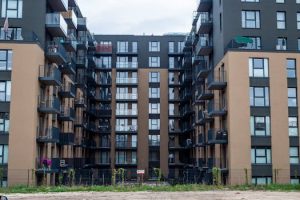Biophilic Design: Bringing Nature into Urban Homes
The bustling and concrete jungles of urban cities can often feel devoid of nature and greenery. But with the rise of Biophilic Design, this is beginning to change. Biophilic Design is a practice that incorporates natural elements and materials into the built environment, re-connecting people with nature in their homes. This design approach not only enhances the aesthetic appeal of urban homes, but also has numerous benefits for our physical and mental well-being. In this article, we’ll explore Biophilic Design and how it brings the beauty and benefits of nature into our urban homes.
What is Biophilic Design?
Biophilic Design is a concept rooted in the idea that human beings possess an innate desire to connect with nature. It is an innovative approach to designing living spaces that incorporates natural features and elements into the built environment. This can include green walls, indoor gardens, natural light, and materials such as wood and stone. The goal is to create a harmonious and balanced living space that reflects the natural world.
The Benefits of Biophilic Design
The incorporation of nature into urban homes through Biophilic Design has numerous benefits for both our physical and mental well-being. One of the main advantages is the improvement of air quality. Indoor plants, such as ferns, palms, and peace lilies, can help to filter out harmful toxins from the air, creating a healthier living environment. This is especially important in urban areas where air pollution is a major concern.
In addition, Biophilic Design has been proven to reduce stress and promote a sense of calmness and relaxation. Studies have shown that being in nature can lower our heart rate and blood pressure, and the same effect can be achieved by incorporating natural elements into our living spaces. This can lead to improved mental health and overall well-being.
Enhancing Aesthetics and Productivity
In addition to the health benefits, Biophilic Design can also greatly enhance the aesthetic appeal of urban homes. The use of natural materials, such as wood and stone, can add warmth and texture to a space, creating a welcoming and inviting atmosphere. Indoor plants can also add a touch of color and life to an otherwise sterile and monotonous environment.
Moreover, studies have shown that incorporating nature into office spaces can greatly improve employee productivity and creativity. This concept can also be applied to our homes, creating a more inspiring and productive environment for work and daily activities.
Implementing Biophilic Design in Urban Homes
There are many ways to incorporate Biophilic Design into urban homes, no matter how big or small the space may be. Creating a green wall or vertical garden can bring a touch of nature indoors, even in the smallest of apartments. Installing large windows to allow natural light to flood in can also have a significant impact on the overall feel of a space.
Additionally, incorporating natural materials such as wood, stone, and bamboo into furniture and decor can add a sense of warmth and connection to nature. Hanging or potted plants, as well as artwork featuring natural landscapes, can also be used to bring elements of the outdoors into our homes.
The Future of Biophilic Design
As the world becomes increasingly urbanized, the importance of Biophilic Design is only going to grow. Not only does it improve our living spaces, but it also reconnects us with the natural world, reminding us of our connection to the environment. The use of Biophilic Design in architecture and interior design is a step towards creating more sustainable and healthier urban environments for future generations.
In conclusion, Biophilic Design is a powerful tool in bringing nature back into our urban homes. Its benefits for our physical and mental well-being, as well as its ability to enhance aesthetics and productivity, make it a valuable approach to designing living spaces. Whether it’s a subtle touch or a full incorporation of natural elements, biophilic design has the potential to transform our urban homes into havens of greenery and serenity.








